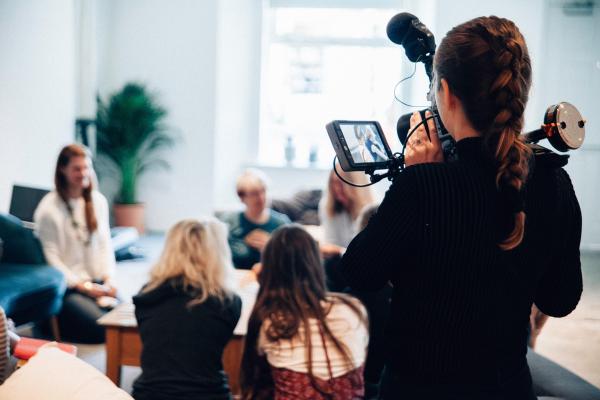From Concept to Creation: A Guide to Video Projects
Video might be the king of content and a vital tool for any business marketing team, but let's be honest; producing video content can be daunting. Don’t worry, there’s good news: producing videos has never been as accessible and more straightforward than it is right now.
From law firm video production to personal resume videos, from the mom-and-pop shop to some of the biggest brands in the world, they all have one thing in common: they're producing compelling video content and reaping the benefits!
Exploring videoproductionlosangeles.com can provide valuable insights into mastering the three essential phases of video projects: pre-production, production, and post-production. Whether you're outsourcing, upskilling, or learning on your own, understanding the fundamentals of each phase is crucial for successful video production. Let's delve deeper into these key aspects.
Phase 1 - Pre-Production
Preparation and setting the groundwork are the first steps of creating a video. To set up your video project for success, you must plan, research, solve problems, and organize during this phase.
Pre-production includes the following steps:
- Strategy and goals for video production
- Scope and budget
- Selection of stories
- Timeline for the project
- Creation of scripts
- Characters-development
- Requirements for the production team/equipment
- Scouting for locations
Meetings should be conducted in a series. Here are a few basics to help you get started, regardless of your team or project scope.
Fact-Finding Meetings
Together with our video production team, discuss how your video project and its goals will be used once it is finished and the purpose and strategy behind it. At this stage, you should be able to communicate the piece's goal, target audience, and tone. A Toronto creative agency can assist in refining your vision and ensuring your video project aligns perfectly with your brand strategy and audience expectations. Collaboration with seasoned professionals ensures a seamless production process, yielding a final product that meets your objectives and leaves a lasting impact.
Pre-Production Meetings
Meetings between the Multimedia Services team and the primary project point of contact usually occur during this phase. Finalize any details regarding the location and the timeline.
Shoot-Prep Meetings
The team will review and approve scripts before showing up on site for filming, discuss interview questions, check characters, finalize the schedule, and confirm locations before starting filming. The production phase will be smoother if all these details are handled ahead of time.
Phase 2 - Production
Filming your video is part of the production phase. Utilize your schedule and estimate the time it will take to effectively complete this phase. Producers and stakeholders must ensure that things run along as closely to schedule as possible.
Camera setup
You can determine your camera setup based on your storyboard and shot list. You can set up the camera using a tripod or a crane, depending on how elaborate your shoot will be.
Talent direction
A crucial part of the process is directing the talent. The way your video is delivered determines the speed, dynamics, style, and appeal.
Make sure you get B-roll footage
Since producing high-quality video content can take lots of time and money, it's essential to get as much out of it as possible.
B-roll footage is the footage that doesn't make it to the final cut. But contained within this footage are fantastic product shots, scenic shots, and many other pieces of content that may be extremely useful for future videos. As such, remind the filming crew that all footage must be kept.
Phase 3 - Post-Production
As the video progresses to this stage, it takes shape as a product. Finally, in preparation for marketing and release, the film is put together, the sound is added, and the final touches are made.
This phase includes the following elements:
- The editing process
- The grading and correction of colors
- Animation and visual effects
- The recording of sound
- A Foley recording is made
- Editing & mixing of Sound
- The soundtrack & music
There are five distinct stages to post-production, each involving numerous individuals:
Logging footage
You won't want to lose your footage, so ensure it is saved and clearly labeled before moving into the editing process. Depending on the length of the film and your computer processing power, this could take several days.
The process of assembling footage
The editing process begins here. First, any substandard footage, outtakes, or misread lines are removed. You may need to wait a few days for this process to be completed. A timeline is then created by placing footage from each scene into an order.
A rough cut of the film
Film footage is edited together in a rough form. Depending on the number of editors involved and your processing power, this can take a few weeks. After the timeline is cleaned up, a rough edit is created, and final takes are chosen for each scene.
Additionally, the film's sound team will rerecord more precise voice acting, add sound effects, and compose music at this point.
The fine cut of the film
Now, the finalized scenes begin to emerge. Consider each frame of the film, ensuring that it works together and that no apparent mistakes have been made, such as changing costumes or camera angles.
The final version
After the grading and correction of the footage, motion graphics, and visual effects are completed, the final cut is where all the work is completed.
Remember: not all video content has to be elaborate and expensive. Sometimes, simple footage can be most effective. That being said, understanding the three phases of video production will help you understand the process for big projects, small projects, and everything in between.

